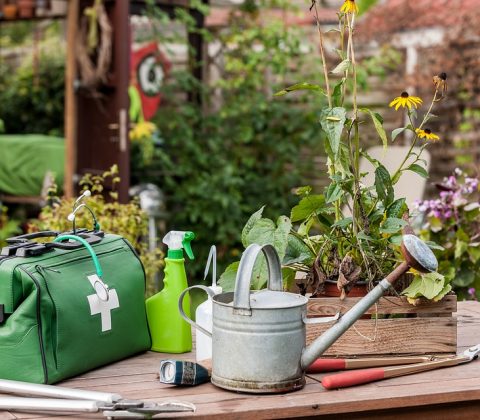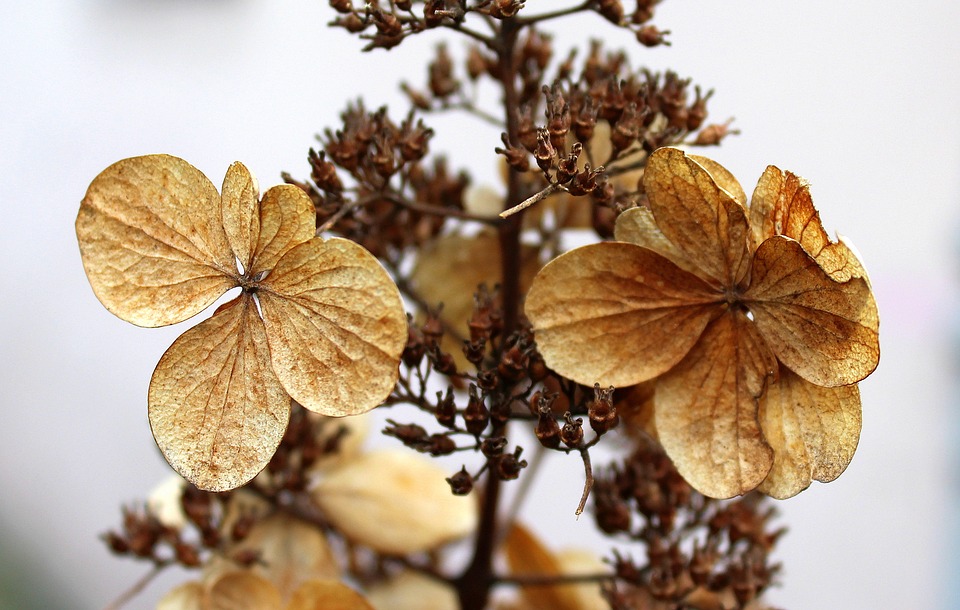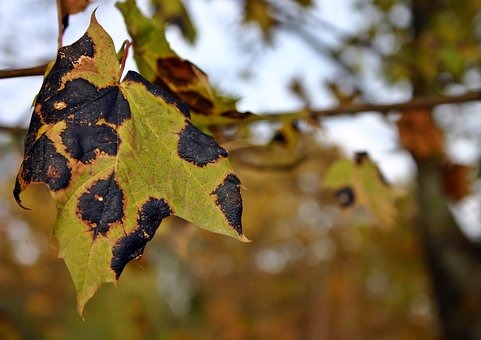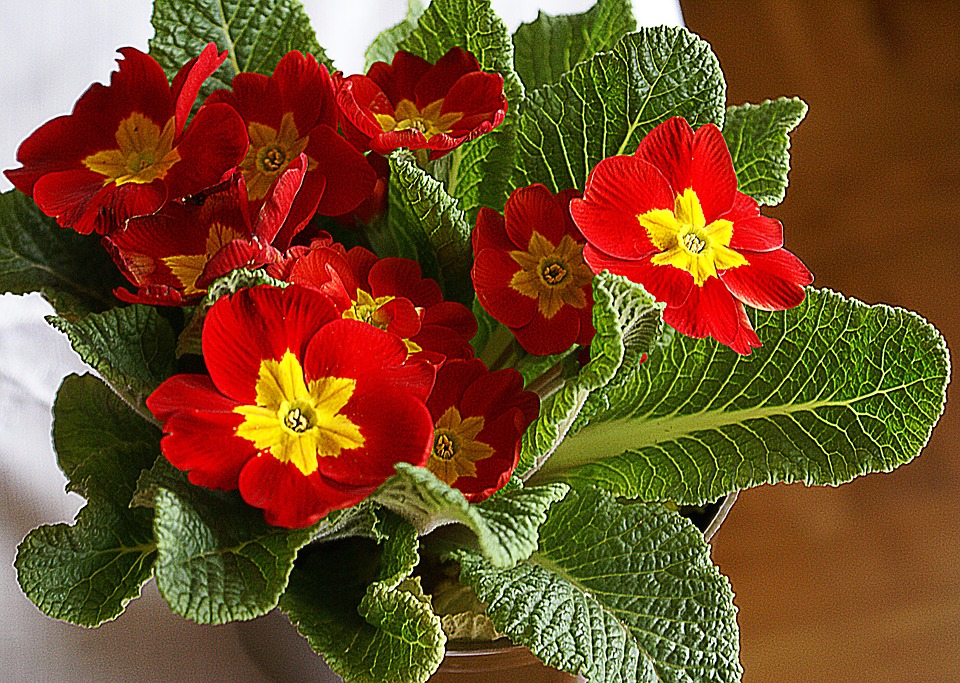

Identify and Remedy Common Plant Growth Issues
It happens to us all…
We put in a lot of time, care and effort to see our plants grow and develop into lush green.
But …
Sometimes, the signs of disease, infestation, and other growth issues can appear and go unnoticed.

Here are some of the common indicators of developmental problems in your plants and how you can remedy them
1. Lack of light
The symptoms of this issue include:
• The new shoots look weak and have slow growth.
• The leaves fail to develop, are small and quickly turn pale.
• The brightly colored leaves on some plant varieties turn green.
• The older leaves wilt and fall faster than they should.
• The plants fail to bloom.
To remedy the problem, you should:
• Increase the amount of natural lighting and consider adding artificial light when you first note any signs of weakness.
• Lower the room temperatures by around 3°C
• Avoid adding any more fertilizers and reduce the rate of irrigation.
2. Too much light
The symptoms of this issue include:
• The leaves with direct exposure to the sunlight quickly turn pale and faded sports appear on them and become brown and dry.
• The leaves gradually turn pale.
To remedy the problem, you should:
• Keep the affected plants away from direct sunlight, especially during summer.
• Consider installing sheer curtains that can help manage the amount of light
• Clip off the leaves that are badly damaged.

3. Lack of water
The symptoms of this issue include:
• The leaves start to wilt
• The plants have a slow growth
• Older leaves develop brown spots on the margins, eventually turning yellow and fall.
• The soil is hard, dry and looks place on the surface. It may at times be damp on the top but dry farther down.
To remedy the problem, you should:
• Water the plant and regulate exposure to direct sunlight.
• Dip the pot in a bucket of water if the soil does not absorb water; wait until the air bubbles stop forming then remove it from the bucket and allow the water to drain.
• Continue to water the plant at the recommended intervals.
4. Too much water or poor drainage
The symptoms of this issue include:
• The leaves develop brown spots on the tips, and they soon start to wilt.
• The plant has slow growth.
• The leaves turn yellow and fall, nearly all at the same time.
• The soil will mostly be damp and with slow drainage.
• The roots are overwhelmed by too much water in the soil that causes them to be spongy and to turn brown and eventually rot.
To remedy the problem, you should:
• Place the watered pot on some clothes or stack of newspapers for a while and make sure the saucer does not have any water.
• Reduce the frequency of watering the plant, only irrigate again once the soil is dry.

5. Too much heat
The symptoms of this issue include:
• The stems are long and lean even after exposing the plant to enough natural light
• The older leaves wilt adequate irrigation of the plant notwithstanding; their margin turn brown, and they begin to fall.
To remedy the problem, you should:
• Reduce direct exposure to the sun during the summer and remove the plant from any direct heat sources during winter.
• At times the plant may require a short rest period between irrigation and sunlight exposure.
• Clip off the diseased and badly damaged leaves.
6. Drop in temperature
The symptoms of this issue include:
• White spots appear all over the leaves or the leaves turn yellow and fall soon after a sudden change in the room conditions, (especially change in temperature).
To remedy the problem, you should:
• Ensure you have a plant species that can tolerate temperatures that are lower than 10°C.
• Ensure you have plants that thrive indoors than outdoors and closely monitors those you have outside during the summers and winters to protect them from the extremes in the temperature changes. Consider bringing the plants indoors during winter.
7. Lack of fertilizer
The symptoms of this issue include:
• The new shoots appear pale, small and weak.
• The flowers that appear fade quickly or they do not bloom at all.
• The new soil not fertilized when switching the plant from the artificial potting mix, or the potting mix was not fertilized.
To remedy the problem, you should:
• Apply the appropriate fertilizer as recommended.
• Transfer the plant to a larger pot during its growth period and add new soil and fertilizer as necessary.
8. Too much fertilizer
The symptoms of this issue include:
• The leaves turn brown, wilt, and fall.
• The plant has a slow growth or stops growing.
• New shoots can be black or deformed.
• White crusts appear on the rim of the pot or the soil surface.
To remedy the problem, you should:
• Flush the soil with water severally to help leach excess fertilizer salts.
• Reduce the frequency of fertilizing and the dosage you apply.

9. Salts accumulating in potting soil because of alkaline water
The symptoms of this issue include:
• Plants with broad leaves are the most affected; their margins turn brown, and the leaves fall. The same things will happen at the tips of the narrow leaves.
• White crusts appear on the rim of the pot and the soil surface.
To remedy the problem, you should:
• Irrigate using tap water; let it sit for a day before you water the plants again
• Regularly mist any aerial parts.
10. Lack of humidity
The symptoms of this issue include:
• The margins of the leaves turn yellow or the tips turn brown.
• The flower buds a weak, dry out, and fall.
To remedy the problem, you should:
• Regularly mist the plants and use a humidifier
• Remove them for direct sources of heat.

11. The irrigation Water is too cold
The symptoms of this issue include:
• The leaves develop pale brown spots
To remedy the problem, you should:
• Sudden temperature changes affect certain plants.
• Irrigate using tepid water.
• The spotting of the leaves is due to the use of frigid water. It also slows down the development of some tropical plants.
12. Pot too small
The symptoms of this issue include:
• The new leaves are small
• The older leaves turn yellow, wilt, and fall.
• The plant withers rapidly in-between watering and irrigation.
• The roots grow out of the pot’s drainage holes and at times show near the surface of the soil.
To remedy the problem, you should:
-• Remover the plant from the pot to confirm the diagnosis.
• Transfer the plants to a larger pot.
• Repot the plant if its roots have formed a tight ball.
You may also be interested in Green Roof Canopies and Gardens
21 Comments
Comments are Disabled





It gets tricky when trying to grow plants indoors. One should really be careful that the plants dont miss anything that they would normally get outside.
Direct exposure to sunlight especially during summer is very dangerous. The plants need the sunlight but it’s always good to moderate. Great article! I learned a lot from this.
I think the plants in my garden are suffering from the water being too cold since the leaves show browning. I will implement the recommendations outlined here and see the changes.
I have plants that have been losing color due to poor drainage. Thanks for the useful tips and I will sure put them to use.
I never thought too much light was harmful to plants. Thanks for the enlightenment.
I do work in a flower company and these are the most common observation. As a scout, you must be keen to report your findings.
I’ve never had so much of a green thumb, so I just thought that as long the plants get watered regularly they will be fine. Thankfully this list is what I need and is very helpful for helping me identify what’s wrong and why my plants aren’t growing the way they should. Would get this printed out later!
This is very informative. It’s also because of the weather and the season I believe.
In a city leaving, space crunch is always there. I have put the flower pots in the balcony where the sunlight is sparse. I take the pots to the terrace at times to feed on sunlight. And, I choose the plants which need lesser sunlight.
My sister loves plants and gardening! I am sure she will find this useful!
I may need these tips since it is Summer here. My mom will surely appreciate this. Thanks!!!
The color and the appearance of the plant can tell you so much about the condition of the plant. Though uninformed person my not be able to tell the difference. This is very helpful.
It’s critical to note that having too much of these elements or having too little does affect the plant. Most people think its only when a plant don’t have fertilizer is affected.
This is a great article. Many a times its hard to determine exactly what my plants are suffering from. I end up doing the exact opposite.
This is a valuable post and a lot of planters will delight in the remedies given here. I have learned about good remedies here.
I recently started a small kitchen garden and been having some problems maintaining my plants. I am glad I found this website because to has so many remedy’s to combat the problems I am currently facing.
I love flowers and I always love to see them come into bloom.I stumble on this article at a very time I’m thinking of planting some flowers around my house..this is an eye opener.. Great share
This will be useful to me as a farmer. I have my small farm and I always have the issue of irrigation water will follow some rules here to have a better harvest
This is very handy advice to sustain healthy plants. I think balance is key between having the right amount of humidity, water and sunlight. I think constant surveillance is important too, so you know what’s working and what isn’t.
I am currently making a garden and I wonder if it’s okay to place my garden not directly open to the sunlight. So good to know these remedies of common plant growth, they give ideas.
I love my plants and after reading your article I have realized that I may have been actually hurting them by feeding them too much fertilizer. Thanks for all your tips! Hopefully this will help to extend the life of my plants and garden.